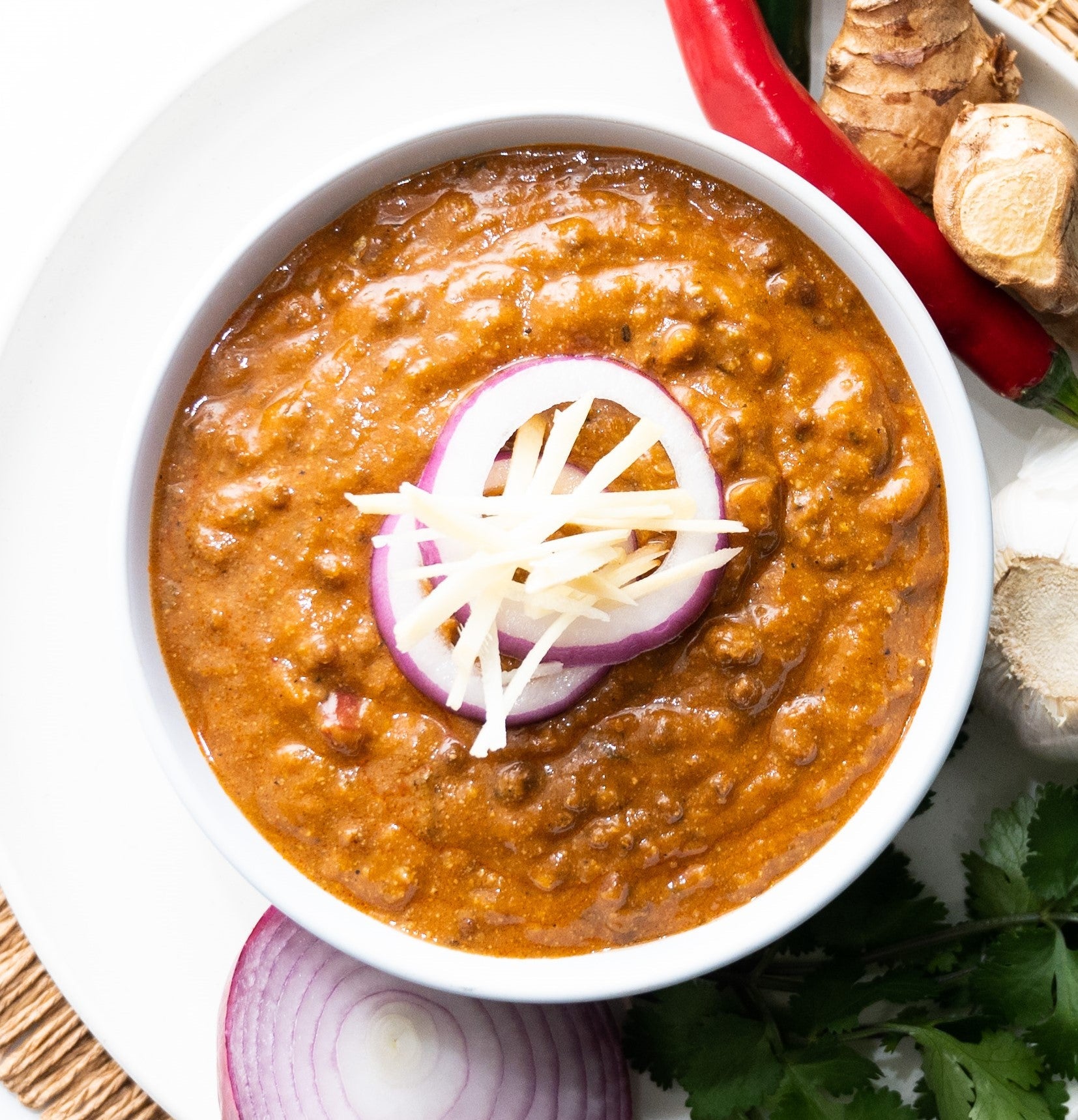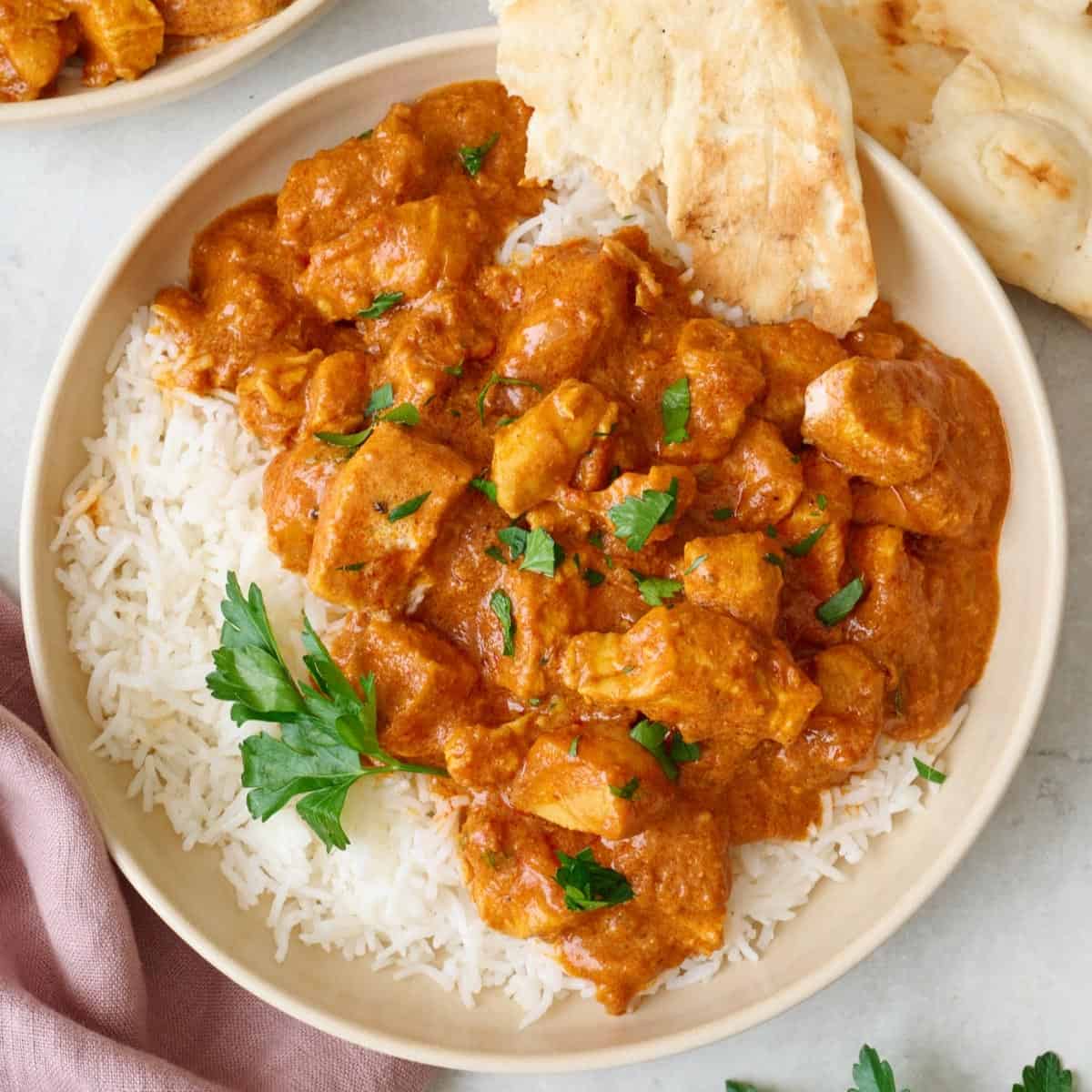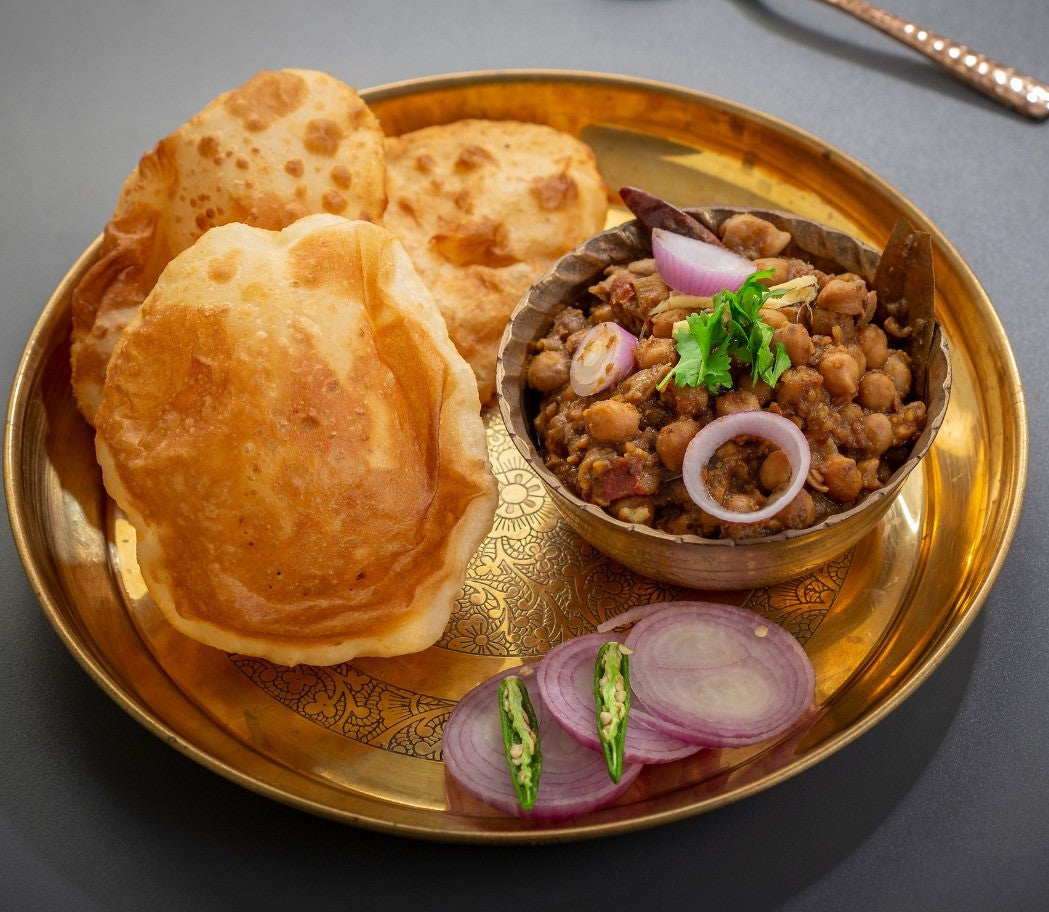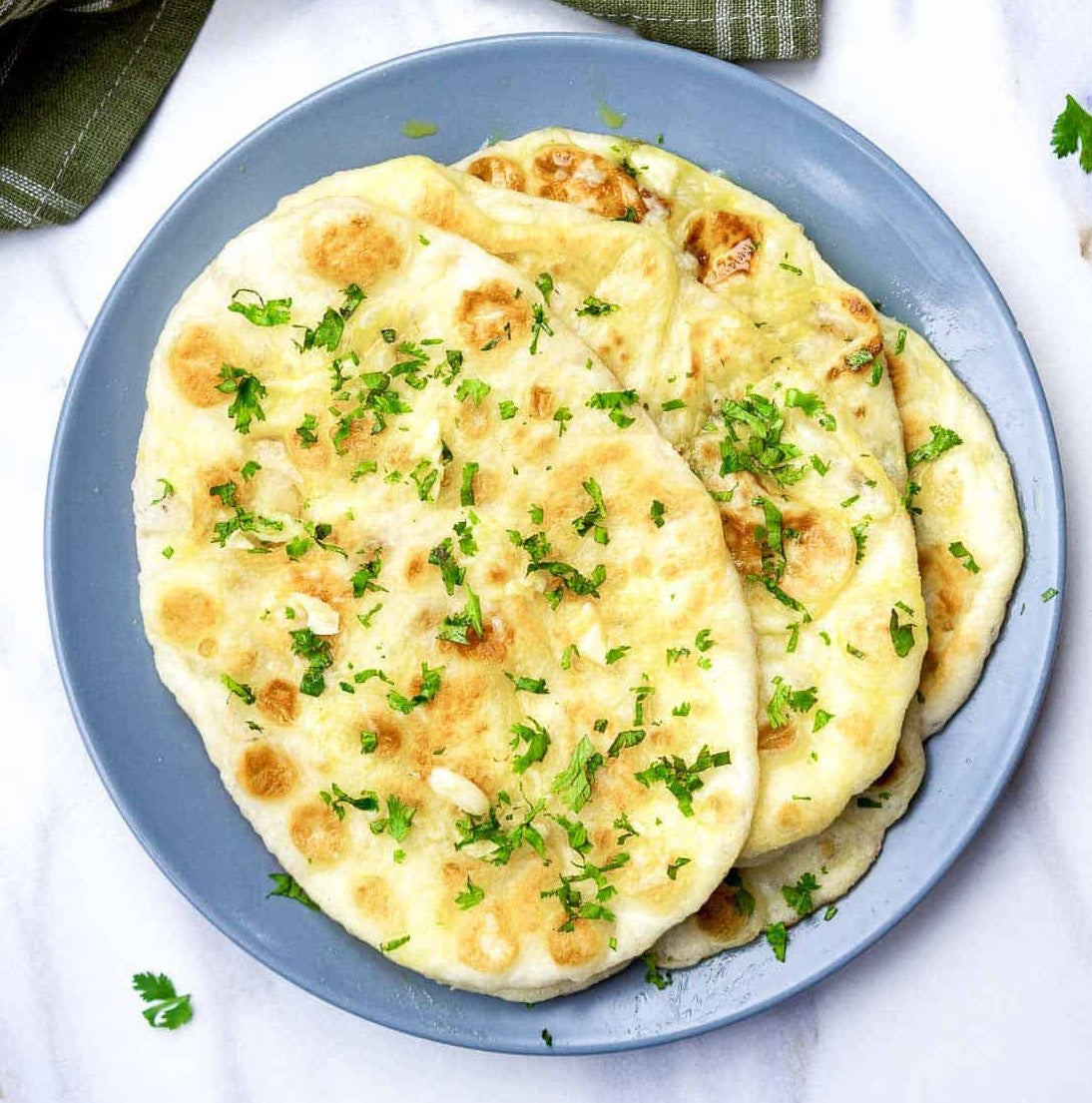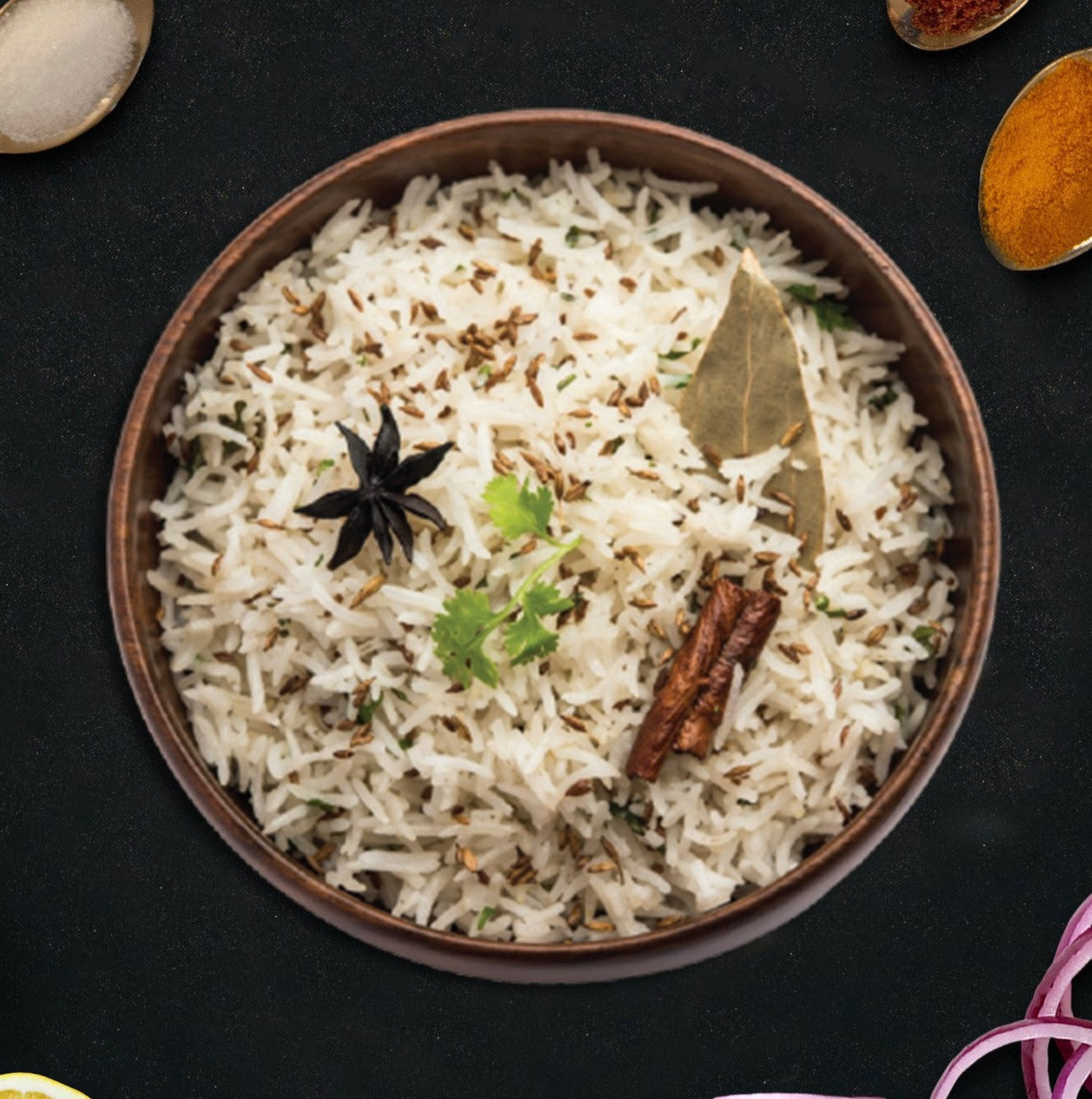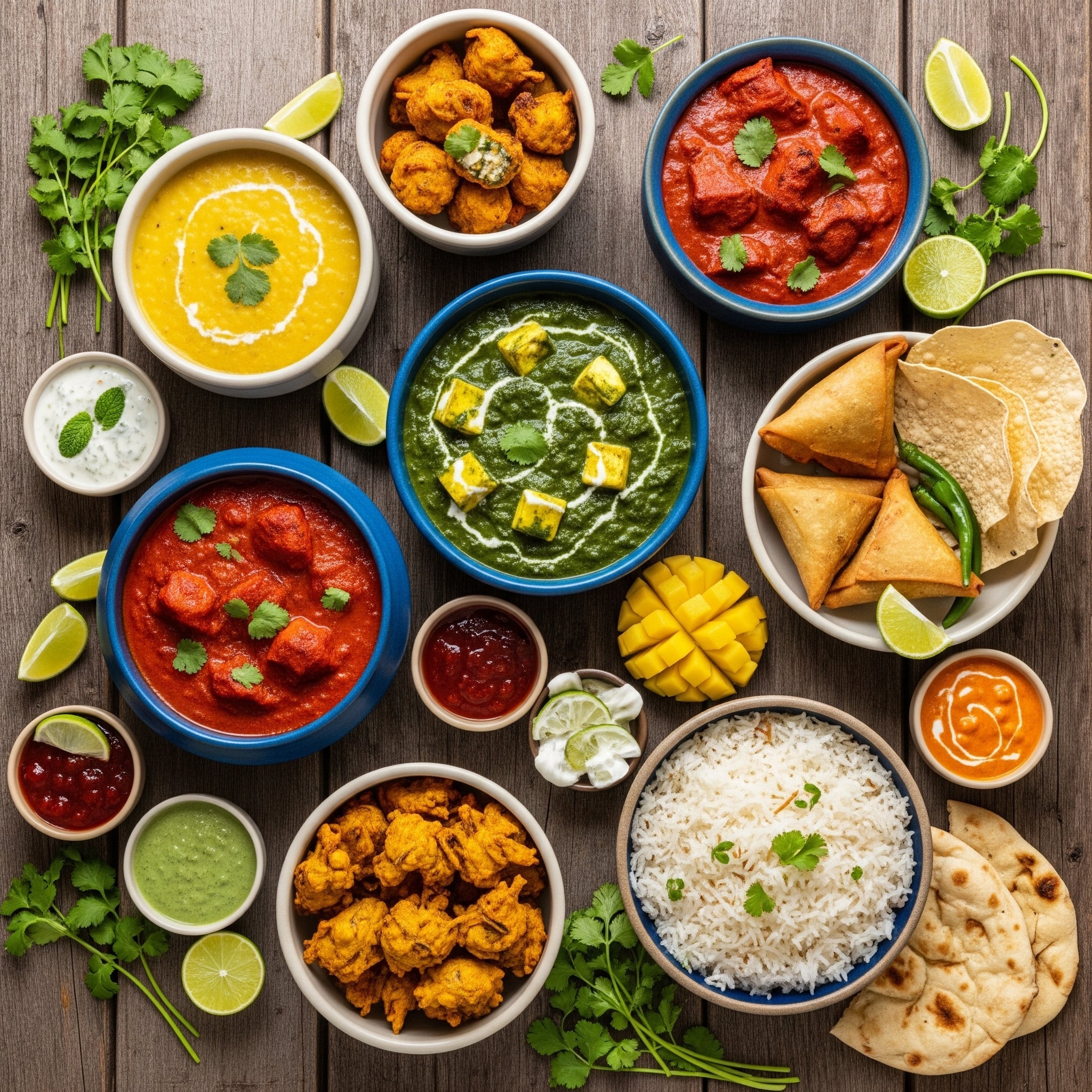
Finding Australia's Best Indian Cuisine
Trying to define the best Indian cuisine is a bit like trying to pick the best type of music—it’s deeply personal. What one person loves, another might find just okay. That's because Indian food isn't one single thing; it's a vast collection of culinary traditions from across a subcontinent.
What truly makes it a favourite here in Australia, though, is its incredible diversity, the masterful way aromatic spices are used, and how perfectly it suits modern diets, from rich, hearty vegetarian curries to healthy tandoori grills.
Why Is Indian Food a Favourite Across Australia?

What makes any dish truly memorable? It’s that perfect balance of flavour, aroma, and texture. Indian food absolutely nails this. The secret is in the spice blends, or masalas. Think of a masala not just as a seasoning, but as the soul of the dish. Spices like cumin, coriander, and turmeric are carefully layered to create a flavour far more complex and satisfying than any single ingredient could be on its own.
This is the real art of Indian cooking. It's what turns simple ingredients into something unforgettable. It’s the difference between a plain tomato sauce and the rich, fragrant gravy of a classic Butter Chicken. This depth is what keeps you coming back, discovering new flavours with every single bite.
A Cuisine for Every Palate
One of the biggest reasons for its popularity is its sheer variety. Indian cuisine is not a single entity; it's a tapestry of distinct regional food cultures. This means there's genuinely something for every taste and dietary need.
- Naturally Vegetarian and Vegan-Friendly: So many dishes are built around lentils (dal), chickpeas, and fresh vegetables, making it a dream for anyone eating a plant-based diet.
- Gluten-Free Options: Most curries and all rice dishes are naturally gluten-free, so there are plenty of choices.
- From Mild to Fiery: You are in complete control of the heat. A creamy Korma offers a gentle, nutty flavour, while a Vindaloo brings that intense, fiery spice for the more adventurous palate.
This adaptability makes Indian food a go-to for group dinners, family takeaways, or anyone with specific dietary goals. The numbers back this up, too. Indian food is the second most searched-for cuisine in the nation, with over 21.3 million Google searches, proving just how much Australians have embraced it. You can dive deeper into Australia's evolving food trends in the full 2025 report.
The Modern Convenience of Authentic Flavour
Let's be honest, in our busy lives, finding the time to cook these complex dishes from scratch is a luxury most of us don't have. This is where the beauty of modern convenience meets timeless tradition. High-quality, ready-to-eat meals close that gap, giving you an authentic taste without the hours of prep work.
The ability to enjoy a homestyle Dal Makhani or a perfectly spiced Chicken Biryani just by heating it up is a game-changer. It makes the 'best Indian cuisine' accessible not just on a Saturday night, but any night of the week.
This guide is here to help you navigate this exciting culinary world. We'll explore the unique flavours from India’s different regions, show you how to order with confidence, and share tips for making your at-home dining experience feel truly special. Your journey to finding your personal best starts now.
Exploring India's Regional Flavour Profiles
To really get your head around the best Indian cuisine, you have to stop thinking of India as one country with a single style of cooking. It’s more like a culinary continent. Each region has its own personality on a plate, shaped by everything from the local climate and history to the ingredients that grow there. A dish from the mountains of the north is as different from a coastal southern curry as Italian food is from French.
Knowing these regional differences is the secret to unlocking any Indian menu. It turns a list of unfamiliar names into a map of delicious possibilities, helping you pick a dish that’s exactly what you’re in the mood for. Let's take a quick trip through these incredible flavour worlds.
North India: Rich, Hearty, and Robust
When most Aussies imagine Indian food, they're usually thinking of the classics from North India. This is the home of Punjab and Delhi, a region famous for its rich, creamy, and deeply satisfying dishes. The climate here is perfect for growing wheat, which is why breads like naan, roti, and paratha are on every table, often baked in a traditional clay oven known as a tandoor.
The flavours are big and comforting, built on a foundation of onions, ginger, garlic, and tomatoes. Dairy is used generously—think ghee (clarified butter), paneer (a firm, fresh cheese), and yoghurt—which gives many dishes their signature luxurious creaminess.
- Signature Dishes: Butter Chicken (Murg Makhani), Lamb Rogan Josh, Dal Makhani, Palak Paneer.
- Flavour Profile: Creamy, smoky from the tandoor, and aromatic with spices like garam masala. It’s the ultimate comfort food.
North Indian food is like a warm hug in a bowl. It’s the perfect choice for a cool evening or anytime you’re craving something that feels both indulgent and deeply nourishing. These dishes are made for scooping up with soft, fluffy bread, making every bite an experience.
South India: Light, Spicy, and Tropical
Head south, and you’ll find yourself in a completely different culinary universe. The food here is lighter, often much spicier, and bursting with tropical flavours. Rice is the undisputed king of grains, served steamed, transformed into crispy pancakes (dosa), or steamed into soft cakes (idli).
The flavour palette is vibrant and zesty. Ingredients that thrive in the heat are the stars of the show. Coconut, whether as milk, oil, or freshly grated, is a cornerstone, lending a subtle sweetness that perfectly balances the spice. Tangy tamarind, popping mustard seeds, fragrant curry leaves, and fiery red chillies create a taste that’s unmistakably fresh and exciting.
South Indian cuisine is a masterclass in balance. It plays fiery heat against cooling coconut and sour tamarind against earthy lentils, creating dishes that are absolutely packed with flavour without ever feeling heavy.
Take a crispy, golden masala dosa filled with spiced potatoes. It’s a world away from a creamy northern korma. Served with coconut chutney and a tangy lentil stew called sambar, it’s a symphony of textures and tastes all on one plate.
East India: Subtle Spices and Sweet Notes
The cuisine from Eastern India, especially from places like Bengal and Odisha, is a fascinating mix of sweet and savoury. With its abundant rivers and long coastline, it's no surprise that fish and seafood are the heroes of many meals.
What really makes Eastern Indian cooking stand out is its unique approach to spices. Panch phoron, a five-spice blend of fenugreek, nigella, cumin, black mustard, and fennel seeds, is a Bengali trademark. The cooking is often done in mustard oil, which gives dishes a pungent, sharp flavour you won’t find anywhere else.
Many dishes have a hint of sweetness, usually from a pinch of sugar or jaggery, which cuts through the pungency of the mustard and the heat of the chillies. This region is also legendary for its sweets, especially those made from milk, like rasgulla and sandesh.
West India: Wonderfully Diverse and Largely Vegetarian
Out west, you'll find yet another distinct culinary identity. In Gujarat, the food is predominantly vegetarian and famous for its delicate sweet and savoury balance, where a touch of sugar is often added to vegetable and lentil dishes to round them out.
Travel down the coast to Maharashtra and Goa, and the flavours get bolder and spicier. Goan food, in particular, has a strong Portuguese influence, with dishes that make brilliant use of vinegar, coconut, and fiery chillies. A Goan fish curry, for example, is tangy, spicy, and rich with coconut milk—a completely different experience to its Bengali counterpart.
This sheer variety makes Western India a treasure trove for food lovers, offering everything from gently spiced vegetarian platters to intense coastal seafood curries.
To help you put it all together, we’ve created a quick guide to these delicious differences.
A Quick Guide to Regional Indian Flavours
This table gives you a snapshot of India's main culinary regions. Think of it as your cheat sheet for figuring out what kind of flavours you're in the mood for and what you might like to try next.
| Region | Primary Flavours | Common Ingredients | Signature Dishes |
|---|---|---|---|
| North India | Rich, creamy, smoky, and robustly spiced. Think comfort and warmth. | Wheat (naan, roti), paneer, yoghurt, ghee, tomatoes, onions. | Butter Chicken, Palak Paneer, Rogan Josh, Chana Masala. |
| South India | Spicy, tangy, and light, with prominent coconut and tamarind notes. | Rice (dosa, idli), coconut, curry leaves, mustard seeds, tamarind. | Masala Dosa, Sambar, Idli, Hyderabadi Biryani. |
| East India | Pungent mustard oil, subtly sweet notes, and delicate seafood preparations. | Fish, seafood, mustard oil, panch phoron (five-spice blend), poppy seeds. | Macher Jhol (fish curry), Rasgulla, Mishti Doi. |
| West India | Largely vegetarian with a sweet & savoury balance (Gujarat) or bold & spicy (Maharashtra/Goa). | Lentils, vegetables, jaggery (in Gujarat); coconut, seafood, vinegar (in Goa). | Dhokla, Thali (Gujarat), Vindaloo, Goan Fish Curry (Goa). |
Once you understand these regional personalities, you're well on your way to ordering the best Indian cuisine for you. Whether you want something creamy and comforting or light and zesty, there's a corner of India's vast culinary map just waiting for you to explore.
How to Navigate an Indian Menu with Confidence
So, you've got a grasp on the incredible diversity of India's regional flavours. Now it's time for the fun part: putting that knowledge to work. Ordering from an Indian menu shouldn't feel like a test; think of it more like planning a culinary road trip where you get to pick the destination.
The real trick is matching the dish to the moment and your mood. Are you craving a rich, comforting meal for a chilly evening, or do you need something light and zesty for a quick lunch? Every dish has its own personality, and there's a perfect one for every occasion.
Choosing Your Dish for the Occasion
The best Indian food is about so much more than just taste—it's about the entire experience. A decadent, slow-simmered curry creates a completely different feeling than a plate of sizzling, straight-from-the-tandoor bites.
Let’s walk through a few common scenarios:
- A Comforting Family Dinner: When you want something warm, generous, and perfect for sharing, a hearty curry is your answer. You can't go wrong with a classic like Lamb Rogan Josh, where tender meat melts into an aromatic, deep-red gravy. It’s a guaranteed crowd-pleaser.
- A Quick and Healthy Solo Lunch: For a midday meal that satisfies without weighing you down, tandoori dishes are brilliant. Tandoori Paneer Tikka gives you smoky, protein-rich cubes of fresh cheese, marinated in spiced yoghurt and grilled to perfection. It’s full of flavour, but surprisingly light.
- Catering for a Crowd: If you're hosting a get-together, variety is key. A winning combination usually includes a beloved curry like Butter Chicken, a satisfying vegetarian option like Dal Makhani, and plenty of naan and rice to soak it all up. That way, everyone finds something they love.
This infographic breaks down the core characteristics of India's main food regions, linking iconic ingredients to their geographical roots at a glance.
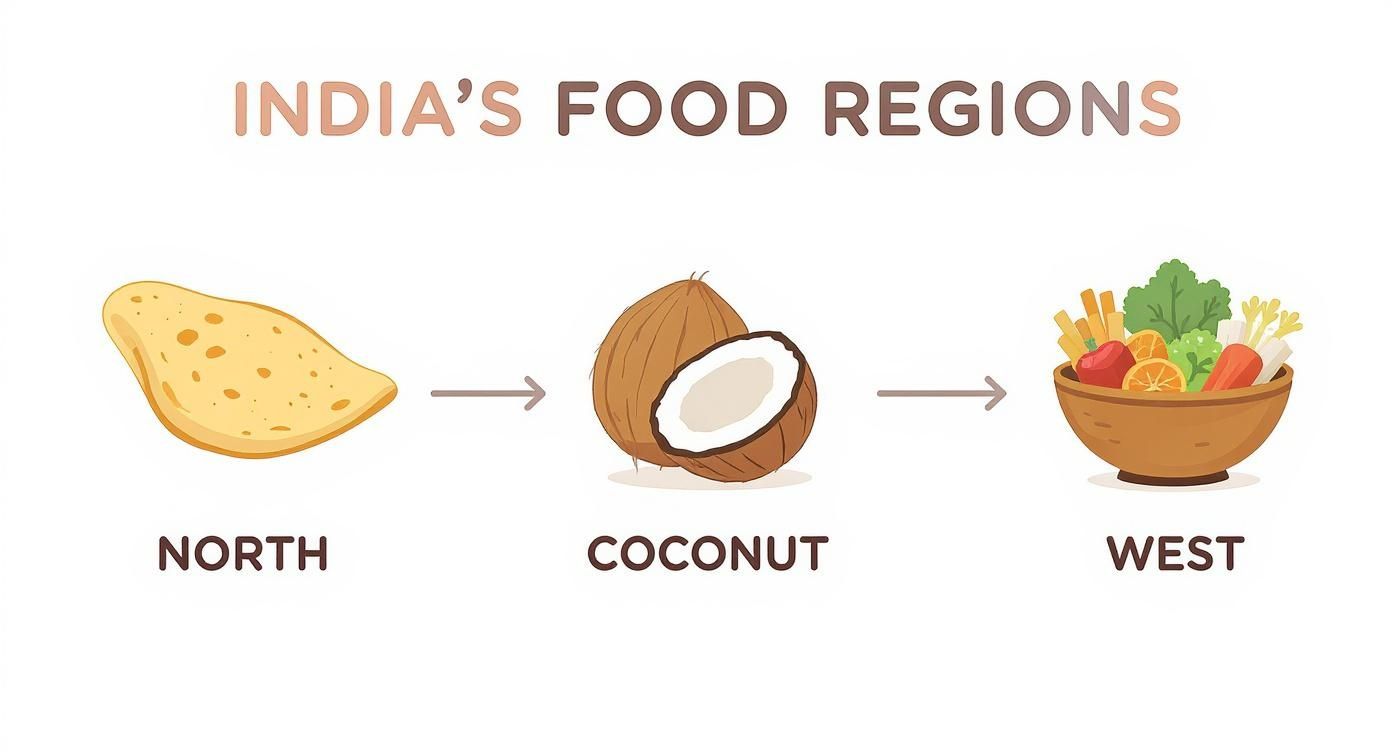
As the map shows, it's easy to see how Northern cuisine is defined by its wheat-based breads, Southern food gets its soul from tropical coconut, and Western dishes are built around a strong vegetarian tradition.
Ordering for Your Dietary Needs
One of the best-kept secrets about Indian food is how wonderfully it caters to different dietary preferences. The cuisine is built on a foundation of plant-based staples, which makes finding delicious options for your lifestyle incredibly easy.
You never have to feel like you're sacrificing flavour. In fact, some of the most famous and beloved Indian dishes just happen to be vegetarian, vegan, or gluten-free.
There's a common myth that you need to make special requests or settle for a bland meal when eating with dietary needs at an Indian restaurant. The truth is, the menu is already designed for you—you just need to know what to look for.
Here are a few go-to choices for different needs:
- Vegetarian: For something truly rich and creamy, Dal Makhani is a must. It's a slow-cooked masterpiece of black lentils and kidney beans in a buttery tomato sauce—the ultimate vegetarian comfort food. Palak Paneer, with its vibrant spinach gravy and soft cubes of cheese, is another fantastic pick.
- Vegan: You'll find that many dishes are vegan by default. Chana Masala, a zesty chickpea curry made with onions, tomatoes, and a beautiful spice blend, is a hearty and deeply satisfying option. Most lentil dishes, known as dal, can also be prepared vegan—just double-check that they're made without ghee (clarified butter) or cream.
- Gluten-Free: If you're avoiding gluten, you're in luck. The vast majority of an Indian menu is wide open to you. Nearly all curries, rice dishes like biryani and pulao, and anything grilled in the tandoor are naturally gluten-free. Just be sure to pair them with steamed rice and skip the wheat-based breads like naan and roti.
The inherently healthy nature of Indian cooking—packed with protein, spices with nutritional benefits, and plant-based dishes—fits perfectly with Australian tastes. We're also seeing modern Indian menus gaining popularity, creating a dynamic scene that blends tradition with new ideas. Our love for dishes like Murg Malai Tikka, Handi Goat Masala, and Tandoori Paneer Tikka shows just how well this food has integrated into our culture. You can explore more about the rise of Indian restaurants in Australia to see how our palates are evolving.
Once you understand these simple principles, you can walk into any Indian restaurant and confidently order a meal that’s perfect for your mood, your guests, and your well-being.
Mastering the At-Home Indian Dining Experience
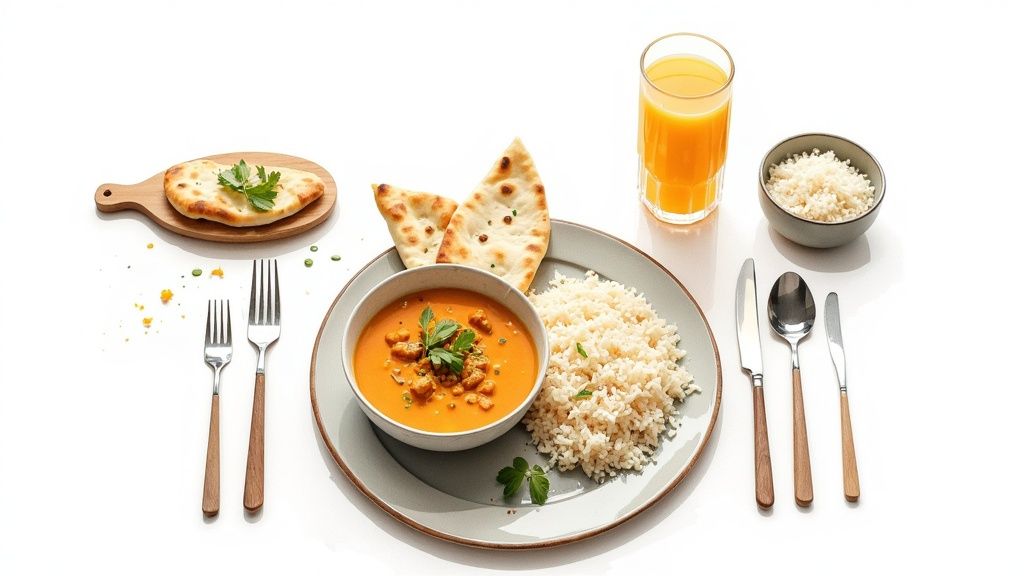
Bringing home your favourite Indian dishes is one of life’s simple pleasures. But let's be honest, turning that takeaway into a truly memorable dining experience is an art. It's all about the small, thoughtful touches that can elevate a convenient meal into something truly special.
With a few simple tricks up your sleeve, you can make your at-home Indian feast taste just as vibrant and delicious as it would in a top restaurant. The secret really lies in understanding classic pairings, choosing the right drink, and—most importantly—reheating your food correctly. These steps are key to preserving the authentic textures and aromatic flavours the chef worked so hard to create.
The Art of Perfect Pairings
Pairing side dishes with your main curry isn't just about piling on more food; it's about creating balance and making every flavour pop. Think of your bread and rice as the essential tools for savouring every last drop of that incredible sauce. Each one has a specific job to do.
- For Creamy, Rich Curries: A soft, slightly chewy Garlic Naan is the perfect partner for dishes like Butter Chicken or a Korma. Its robust texture is brilliant for scooping up those thick, luxurious gravies.
- For Spicier, Bolder Dishes: Simple, fluffy Steamed Basmati Rice is your best friend when tackling a fiery Vindaloo or a complex Rogan Josh. Its neutral flavour soaks up the sauce beautifully without competing, helping to cool your palate between bites.
Getting this balance of textures and flavours right is a huge part of what makes Indian cuisine so deeply satisfying. The right pairing can turn a great dish into an unforgettable one.
Simple Beverage Suggestions
Choosing a good drink can also completely transform your meal by complementing the intricate spice blends and cleansing your palate. While you can never go wrong with your personal favourite, some options are classics for a very good reason.
A traditional Mango Lassi—a sweet and creamy yoghurt-based drink—is absolutely fantastic at taming the heat of spicier curries. Its cooling properties provide instant relief and a delightful contrast to the rich flavours.
If that’s not your style, a crisp, cold lager is another excellent choice. Its clean finish and light carbonation cut straight through the richness of ghee and cream, refreshing your taste buds and getting you ready for the next delicious mouthful.
How to Reheat Ready-To-Eat Meals Perfectly
This is it—the single most important step to mastering your at-home experience is proper reheating. This is where so many delicious meals sadly lose their magic. A microwave on full blast can leave you with rubbery textures and hot and cold spots.
To make sure your meal is as good as when it was first cooked, just follow these simple guidelines.
- Curries and Dal: The best way is to gently reheat sauces on the stovetop. Pop them in a saucepan over a low-to-medium heat, stirring occasionally until warmed all the way through. This method preserves the silky texture of the gravy and awakens the aromatic spices without overcooking anything.
- Rice and Biryani: The key to fluffy, revived rice is adding a touch of moisture. Just add a tablespoon of water, cover it, and heat it in the microwave for a minute or two. You can also warm it in a covered pan on the stovetop.
- Breads (Naan, Roti): Want to bring back that soft, slightly crispy texture? Sprinkle your naan with a tiny bit of water and heat it in a hot, dry frying pan for about 30 seconds per side. Alternatively, wrap it in foil and pop it in a hot oven for a few minutes.
For more tips on enjoying convenient meals without compromise, check out our guide to the best ready meals in Australia, where we explore how to get restaurant-quality results right in your own kitchen.
Your Guide to Convenient and Authentic Indian Meals
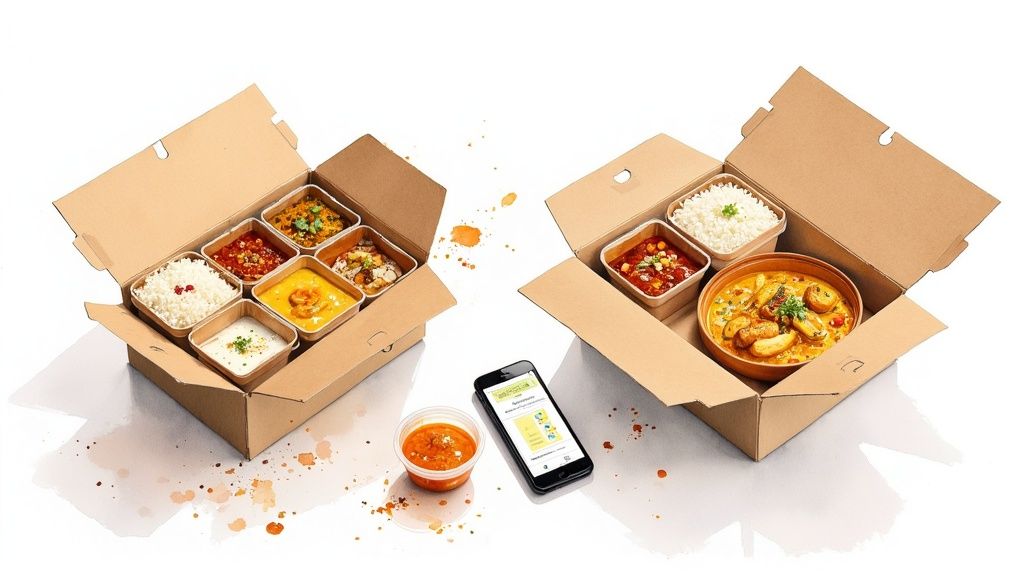
Let’s be honest. While the thought of exploring the incredible world of Indian food is always exciting, most of us simply don't have the time to master a slow-cooked curry on a busy Tuesday night. This is where the sheer brilliance of high-quality, ready-to-eat meals comes into play. They perfectly bridge the gap between our craving for authentic, homestyle flavours and the realities of modern life.
For busy professionals, students buried in assignments, or families needing a quick and nourishing dinner, these options are a lifesaver. It means you can enjoy the soul-warming goodness of real Indian cooking without spending hours hunting down spices and tending to a simmering pot.
This isn’t just about convenience; it’s about how we’ve come to enjoy food in Australia. There's a huge appetite for authentic, easy-to-access meals, and it shows. The Australia Ethnic Food Market, where Indian food is a major player, was valued at $1.33 billion in 2024 and is expected to more than double by 2032. This growth is fuelled by our multicultural society and a serious demand for quality ready meals. You can discover more insights about Australia's ethnic food market growth on Credence Research.
The Best Indian Cuisine Delivered to Your Door
Modern meal services have completely changed the game, giving us a simple way to explore regional specialties without leaving home. Imagine having a restaurant-quality menu at your fingertips, where you can order a creamy Palak Paneer or a fragrant Chicken Biryani with just a few clicks.
These services bring an incredible variety right to your doorstep. You're no longer limited to the few local takeaways. Instead, you can dive into an extensive menu that covers everything from Northern tandoori classics to Southern vegetarian staples.
It opens up a new culinary adventure for every night of the week.
- For the time-poor professional: A protein-packed, flavourful meal that's ready in minutes is the perfect way to refuel after a long day.
- For the busy family: Wholesome, preservative-free dishes that everyone will love save precious time on meal prep and cleanup.
- For the university student: Affordable, tasty, and properly satisfying meals make it easy to eat well without breaking the budget or turning to instant noodles.
The real beauty of a service like Jewel of Asia is that it combines authenticity with ultimate convenience. Chef-crafted meals made with natural ingredients are chilled and delivered, so all you have to do is heat and eat.
This simple process makes enjoying top-tier Indian food an everyday reality. For an even deeper dive, our guide on Indian food delivery in Melbourne has more tips for getting delicious meals brought straight to you.
Effortless Entertaining with Catering Packs
Hosting a dinner party, office lunch, or family gathering can be a lot of work, but it doesn't have to be. One of the smartest shortcuts is using purpose-built catering packs. This approach takes all the guesswork out of planning and lets you serve a delicious, impressive Indian feast with almost no effort.
Think of it as having your own personal chef on call. You can build a crowd-pleasing menu that caters to different tastes and dietary needs, making sure every single guest leaves happy.
What to Look for in a Quality Meal Service
Not all ready-to-eat meals are created equal. To make sure you’re getting a genuinely authentic and high-quality experience, here are a few things to keep an eye out for:
- Authentic Recipes and Natural Ingredients: The best services stick to traditional recipes and skip the artificial preservatives. This lets the true flavours of the spices really shine.
- Wide Menu Variety: Look for a broad selection that includes plenty of vegetarian, vegan, and gluten-free options, covering different regional dishes.
- Flexible and Affordable Options: Services that offer student deals, catering packs, and clear per-serving pricing deliver great value, no matter who you're ordering for.
- Reliable Delivery: Consistent, free shipping and clear ordering deadlines are crucial. It ensures your meals arrive fresh and on time, every time.
By choosing a service that ticks these boxes, you can confidently enjoy the rich, complex, and deeply satisfying flavours of the best Indian cuisine, whenever you feel the craving.
Your Indian Food Adventure Starts Now
We've journeyed together across the incredible culinary map of India, and if there's one thing to take away, it's that the 'best' Indian food isn't a single dish—it's whatever dish is best for you, right now. From the hearty, tandoori-fired meals of the North to the light, coconut-laced curries of the South, you're now set to navigate any menu with the confidence of a seasoned pro.
Now, you can match a rich Lamb Rogan Josh to a cosy night in or pick a vibrant Chana Masala for a satisfying plant-based dinner. When you understand the personality behind the regions and their unique flavours, ordering isn't just a guess; it becomes a genuinely exciting choice. It’s all about finding that perfect meal that fits your mood, your diet, and the occasion.
The real magic of Indian food is its staggering variety. Every meal is a chance to find something new—a spice you’ve never tasted, a texture you didn’t expect, or a regional dish that instantly becomes your new go-to.
Trust Your Taste Buds
So, what's next? It’s simple: be curious. With everything you've learned here, it's time to step outside your usual order. Go on, try the dish you're not sure how to pronounce or dive into a regional cuisine you've never tasted before. The hunt for authentic Indian food near me is half the fun, turning an ordinary takeaway night into a delicious exploration.
You've got the foundation to truly appreciate the intricate spices, diverse textures, and deep-rooted traditions that make Indian cuisine a global treasure. Let your palate be your guide, and let every meal be a new chapter in your flavour story. Your next favourite dish is just an order away.
Your Questions About Indian Cuisine, Answered
Jumping into the world of Indian food can bring up a few questions. That's totally normal. Getting the inside scoop can be the difference between a good meal and a truly fantastic one, so let's clear up a few of the most common queries.
Think of this as your quick guide to ordering like a pro and finding the dishes you'll absolutely love.
What's the Difference Between a Curry and a Masala?
This is probably the most common question I hear, but the answer is pretty straightforward once you think about it. Imagine ‘curry’ is the finished dish—the complete meal in the bowl. ‘Masala’ is the heart of that dish, the unique blend of spices that gives it its signature flavour.
So, a curry is really any dish made with a spiced sauce or gravy. It’s a huge umbrella term. A masala, on the other hand, is the specific recipe of ground and whole spices that a chef toasts and combines to build flavour. A dish like Chicken Tikka Masala is a type of curry, and its name tells you it's defined by that specific "Tikka Masala" spice mix.
I Don't Like Spicy Food. What Can I Order?
If you're not a fan of chilli heat, you're in luck. Some of the most beloved and authentic Indian dishes are celebrated for their rich, aromatic flavours, not their spice level. Great Indian cuisine is all about the depth and complexity of spices, not just the burn.
You’ll find plenty of incredible, mild options on any menu. Keep an eye out for these classics:
- Butter Chicken: This one's a global superstar for a reason. Its creamy, buttery tomato gravy is the definition of comfort food—rich and flavourful, but very mild.
- Korma: A truly luxurious curry. It’s made with a base of yoghurt, cream, and ground nuts (often cashews or almonds), which creates a beautiful, fragrant, and slightly sweet sauce.
- Dal Makhani: A creamy, slow-cooked masterpiece made from black lentils and kidney beans. It’s incredibly hearty and packed with flavour, but with no chilli heat at all.
Don't forget about anything from the tandoor oven! Dishes like Tandoori Chicken or Paneer Tikka are marinated in spiced yoghurt, which makes them smoky and fragrant rather than fiery.
Are There Healthy Options in Indian Cuisine?
Absolutely. In fact, traditional Indian home cooking is incredibly wholesome and balanced. The cuisine is built on a fantastic foundation of vegetables, lentils, legumes, and lean proteins, making it one of the easiest to find a nutritious meal.
One of the biggest myths is that Indian food is always heavy or swimming in oil. The reality is that it’s one of the best cuisines for finding truly satisfying, healthy meals that don’t compromise on flavour.
For a lighter meal, just focus on dishes that are grilled, steamed, or built around plants. Tandoori-cooked meats and vegetables are always a brilliant choice because they’re lean and cooked without much oil. You also can't go wrong with lentil dishes (dal) or chickpea curries (chana masala), which are loaded with plant-based protein and fibre.
To keep things balanced, just pair your main with some simple steamed basmati rice and choose a whole wheat roti instead of a richer bread like naan. It’s a simple switch that makes a big difference.
Ready to explore these flavours for yourself? Jewel of Asia delivers chef-crafted, preservative-free Indian meals right to your door. Browse our menu of over 50 authentic dishes and find your new favourite today.
Share

